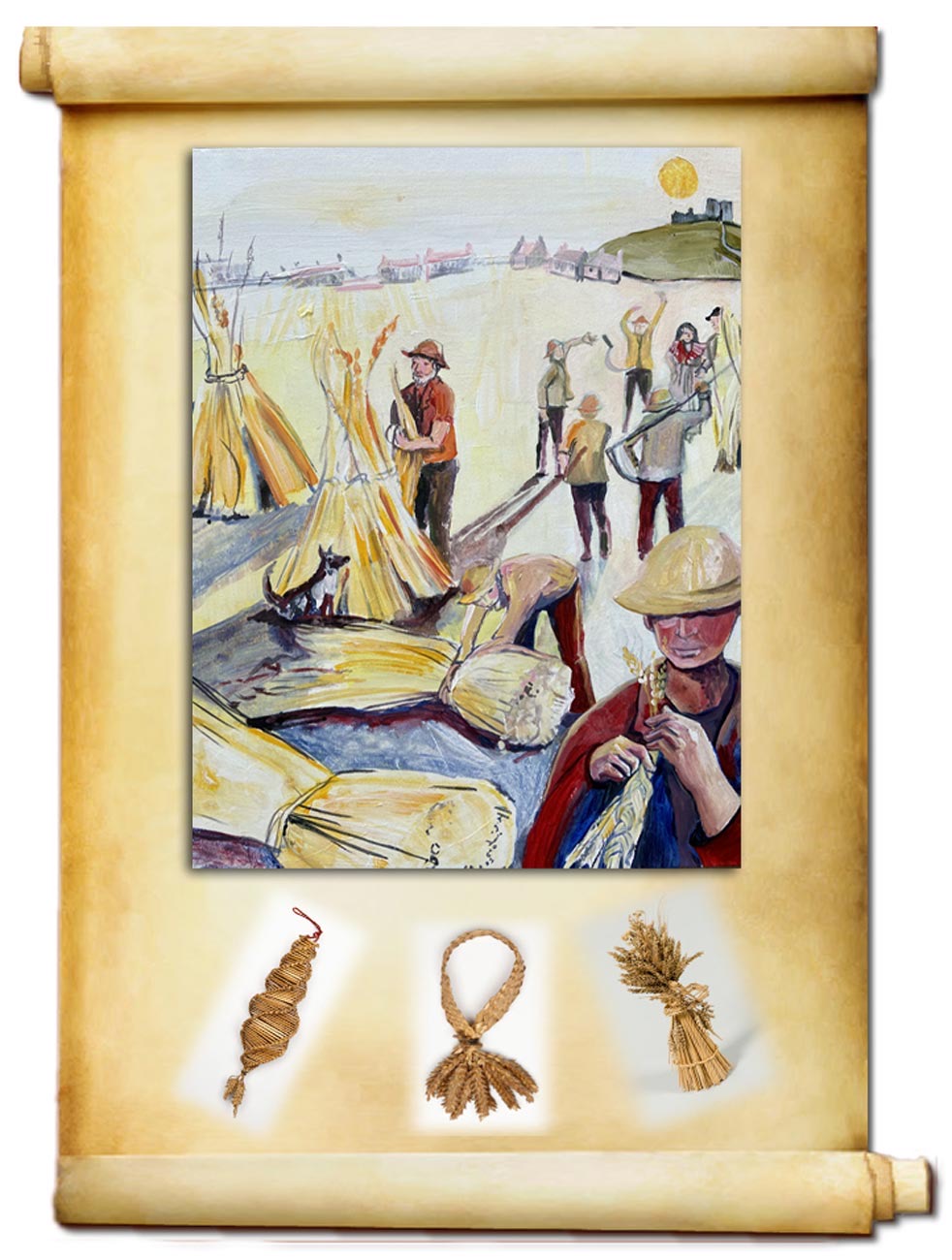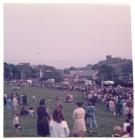Content can be downloaded for non-commercial purposes, such as for personal use or in educational resources.
For commercial purposes please contact the copyright holder directly.
Read more about the The Creative Archive Licence.
Description
Before the Industrial Revolution most people lived in rural communities and their lives were governed by the seasons. It was important to know when to plant and harvest crops so ceremonies and events were held to mark certain dates throughout the year. With the coming of Christianity these became associated with feast days and this is when the main fairs were held.
The year started with preparation and planting in the spring; this is also when the animals were moved to the upland pastures, and ended with the different harvests. The harvest was important as fodder would be needed for the winter months, vegetables and fruit preserved and grain stored. The first main harvest was the hay which usually started around Mid Summers Day (June 21st). Criccieth Fair, known as Ffair Gwyl Ifan, was held this week. Extra farm hands would be hired during the fair.
Captain David Williams (1802-1887), who ran the Eifion Shop on the main road in Criccieth also farmed several fields around the town. In his diary he wrote: June 27th 1850 ...'llifo y bladura' (sharpening the scythes). On the 30th he wrote 'Dechrau lladd gwair yn Ngae y Fynwent' (Started mowing the hay). He completed the harvest from several fields by the 13th July. He notes on August 5th 'Cleaned the rick-yard' and the next day he started the barley harvest which he and his farm hands completed by August 18th. A small field of wheat was then cut and the corn crop dried and stored. During September and October the lentils, mangolds, carrots and finally potatoes were gathered.
At all times the livestock: cattle, pigs, sheep and of course the horses had to be tended. The harvest was an important time and thanksgiving services were held in churches and chapels throughout the land. It marked the end of the old Celtic year and several pagan traditions and celebrations continued to the 20th century. Myrddin Fardd (John Jones) from Chwilog recorded these a hundred years ago and in recent times Twm Elias, the folk lore expert, has written extensively on these traditions and old farming practices.
One of these celebrations was 'Gŵyl y Grog' (Festival of hanging) which was held mid September. Some believed that this was to celebrate hanging the scythes in the barn but it more likely relates to the religious festival of 'Holy Cross'. The harvest was a communal affair with neighbouring farmers and cottagers, including wives and children, helping their neighbours and cutting the final sheaf was a fun and joyous occasion. There were various versions of this tradition and in Eifionydd it was called 'Y Gaseg Fedi' (The Harvest or Reaping Mare). The last sheaf was tied tightly and left standing and the men threw their sickles at it attempting to cut it. The successful one grabbed this 'Corn Dolly' and raced with it to the farm house trying to keep it dry while the women threw buckets of water at him. It was kept in the house for good luck and ploughed into the land the following spring.
When talking of this subject we must remember that Eifionydd has a shoreline so the harvest from the sea was also important. In summer mackerel were caught and the herring arrived in Tremadog Bay in the autumn or early winter. These were smoked or pickled. Most farms and cottages had a barrel of herring to last over the Winter.






Do you have information to add to this item? Please leave a comment
Comments (0)
You must be logged in to leave a comment